Author: Ray Found
Before our species learned to wrangle gases into pressurized tanks and regulate their release with fancy gauged instruments, beer developed its fizz naturally. In the beginning, beer was often pulled directly from the vessel it was fermented in, which was commonly open and thus produced a product with carbonation levels far lower than what we’re accustomed to today. With advancements in knowledge, technology, and experience, brewers learned they could achieve a higher degree of sparkle by sealing the the still fermenting beer in a vessel, sometimes adding a small charge of sugar and/or some kräusen from a currently fermenting batch. This process came to be referred to as “conditioning.”
Still practiced by many these days, naturally carbonating beer has lost major ground due to a relatively new method that’s quicker and arguably more controlled in which pressurized CO2 is forced into the well contained beer. A web search for “history of beer carbonation” was largely futile, though it did yield one interesting tidbit from a 1903 book, One Hundred Years Of Brewing, in which the author claims that “practical and successful” force carbonation results weren’t obtained until the end of the 19th century and that it took some time to catch on, eventually making its way to larger macro breweries in the United States. Sure to please any handlebar sportin’ hipster, an early adopter and advocate of force carbonation was none other than the Pabst Brewing Company.
I made the move from bottling with natural conditioning to kegging with force carbonation a few years ago and couldn’t be happier. I love how my beer is ready to drink just a couple days after packaging rather than requiring the 2-3 weeks it takes to naturally carbonate in bottles. Further still, my love affair with IPA really began when I started kegging, as doing so allows me to drink the beer its at its peak freshness with hop aromas bursting from the glass in a way I never experienced in bottle conditioned versions. While it’s possible this difference is a function of container dimensions, my hunch is that it has more to do with the difference in storage conditions, namely temperature, and consequent yeast activity.
Recently, I’ve heard of brewers choosing to naturally carbonate their beer not in bottles, but in the keg the beer will be served from. Proponents of this so-called “keg conditioning” method have claimed it benefits the beer, even hoppy styles, by scavenging oxygen and producing a perceptibly different type of carbonation. I was curious how this tradition-harking method compared to a more standard force carbonation approach and put it to the test!
| PURPOSE |
To evaluate the differences between force carbonation and natural carbonation in the keg in beers of the same recipe.
| METHODS |
Since IPA was the first beer I made where the benefits of kegging really seemed apparent to me, I figured it’d be the perfect style for this xBmt– MACC IPA it would be!
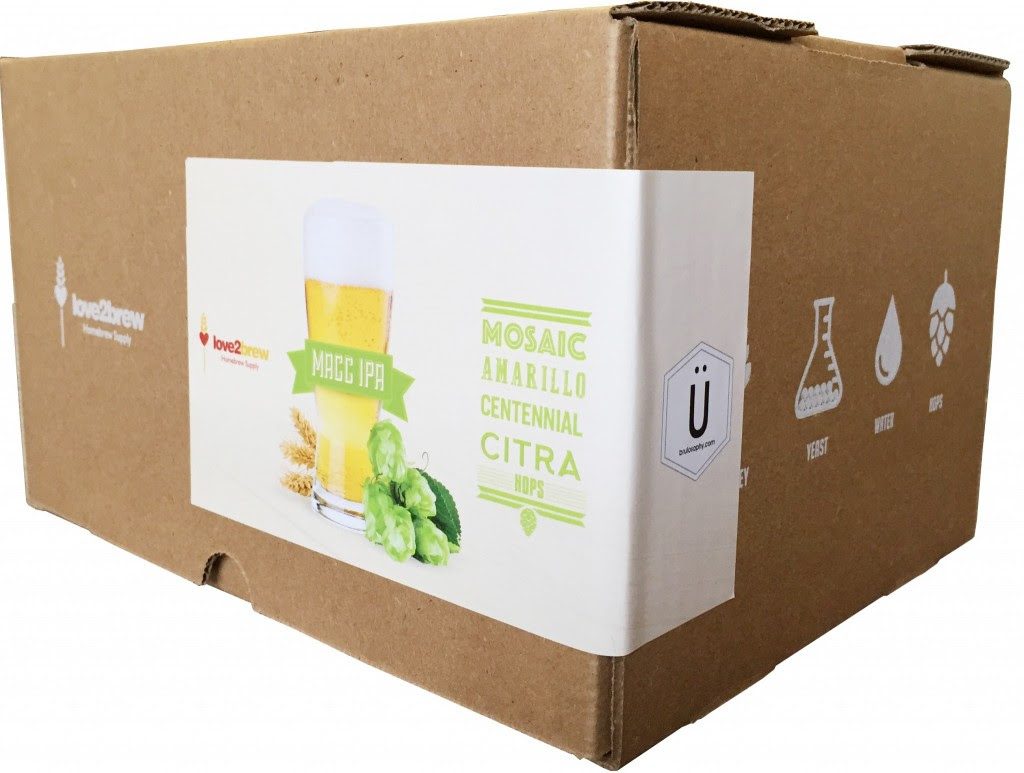 As usual, I began my brew day a couple days beforehand by turning my high mineral city water into blank-slate RO brewing liquor.
As usual, I began my brew day a couple days beforehand by turning my high mineral city water into blank-slate RO brewing liquor.
When brew day arrived, I lit the flame under my strike water then turned my attention to weighing out and milling the grains for this batch.
Once my strike water was at the proper temperature, I added the amount of minerals and acid need to get to my target profile before mashing in to hit my desired temperature.
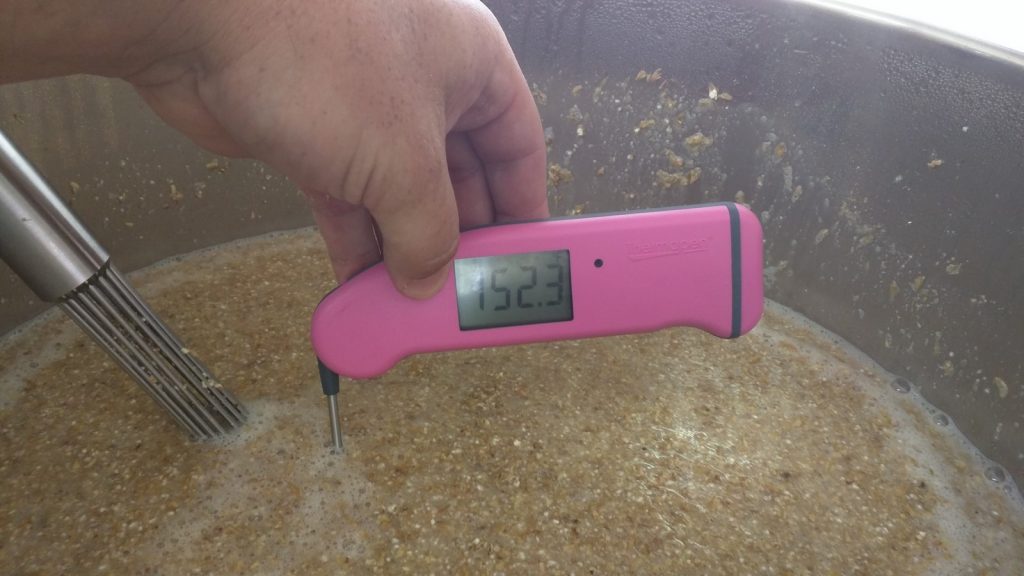
After a 60 minute rest, I performed my normal batch sparge procedure and collected two runnings of sweet wort in plastic buckets.
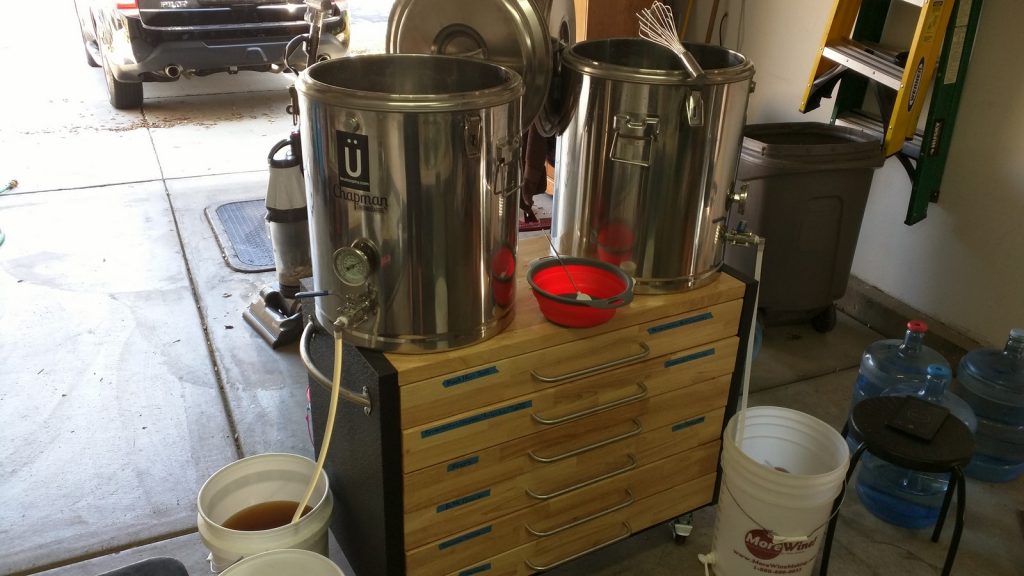
I transferred the wort to my kettle and swiftly brought it to a rolling boil.
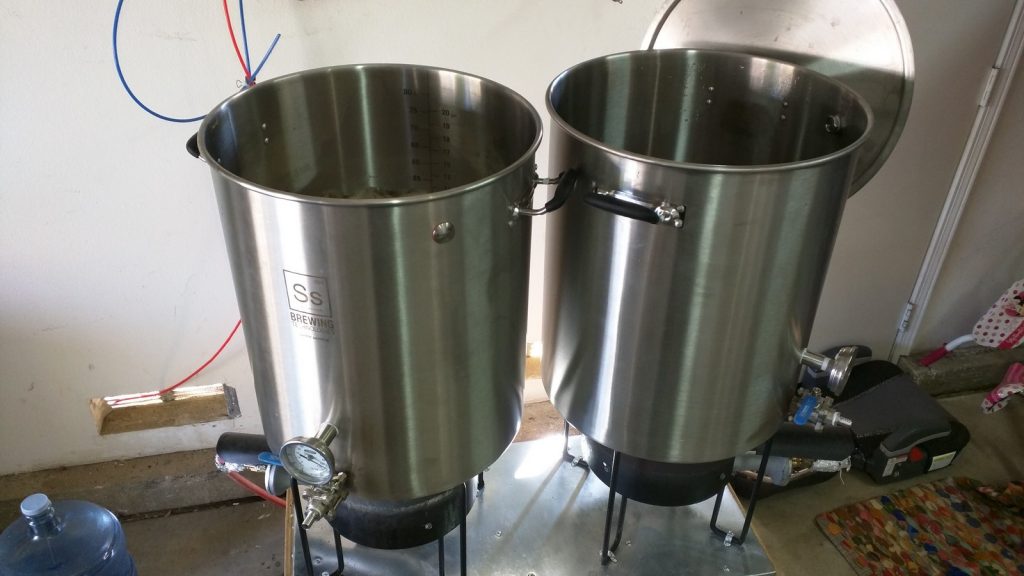
An hour and a few hop additions later, the boil was finished. I proceeded to quickly chill the wort as low as my warm groundwater would take it, which was 82°F/28°C.
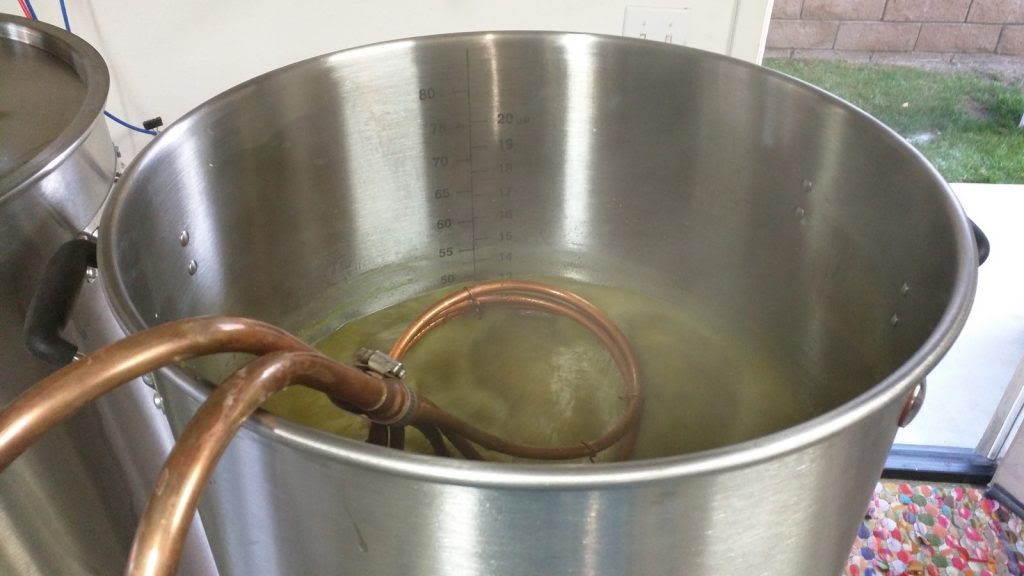
A hydrometer reading at this point revealed the crystal clear wort was at and OG of 1.070.
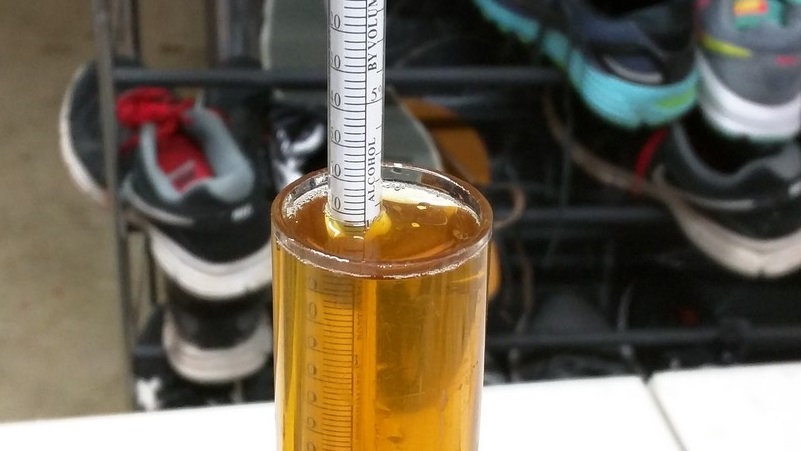
I pitched the yeast once it dropped to my target fermentation temperature of 66°F/19°C in my cool chamber. Since nothing was different between the batches at this point, it was no surprise they fermented similarly.
Fermentation was complete a couple weeks later at which point I confirmed both batches had attenuated to the same FG.
I dropped the chamber temperature to near freezing for a two day cold crash. This is the point where I would normally fine with gelatin, and despite many reports of it having no impact on natural carbonation, I opted not to do it for this xBmt.
One batch received the normal treatment of being placed in my keezer under 40 psi of pressure immediately after being racked to a keg. The natural carbonation batch, on the other hand, required a bit more work. I started by using my favorite priming sugar calculator to determine the proper amount of sugar needed to carbonate the entire batch to my desired level. In researching the best approach to naturally carbonating an entire batch in the keg, I found some recommendations to use slightly less sugar than I would if I were bottle conditioning; however, I chose to use the amount the calculator suggested since it seemed that was the more common method. To carbonate 4.5 gallons of beer to 2.7 volumes, the calculator suggested I use 119 grams of table sugar based on a post-fermentation temperature of 72°F/22°C. Preparing the priming sugar solution took me back to my bottling days.
I dissolved the sugar in a couple cups of boiling water then dumped the resultant solution in the bottom of a sanitized keg and racked the beer on top, the same way I used to do in my bottling days. Finally, I hit it with just enough CO2 to seat the lid and stuck the keg in a closet that maintained a fairly consistent temperature of 75°F/24°C.
Two weeks later, after confirming the keg conditioned beer was indeed carbonated, I put it in my keezer with the CO2 set my preferred serving pressure of 12 psi. Due to work travel, the beers remained untouched for 10 days before I began sampling them, and even after all that time, the force carbonated beer was notably more clear than its naturally carbonated counterpart.
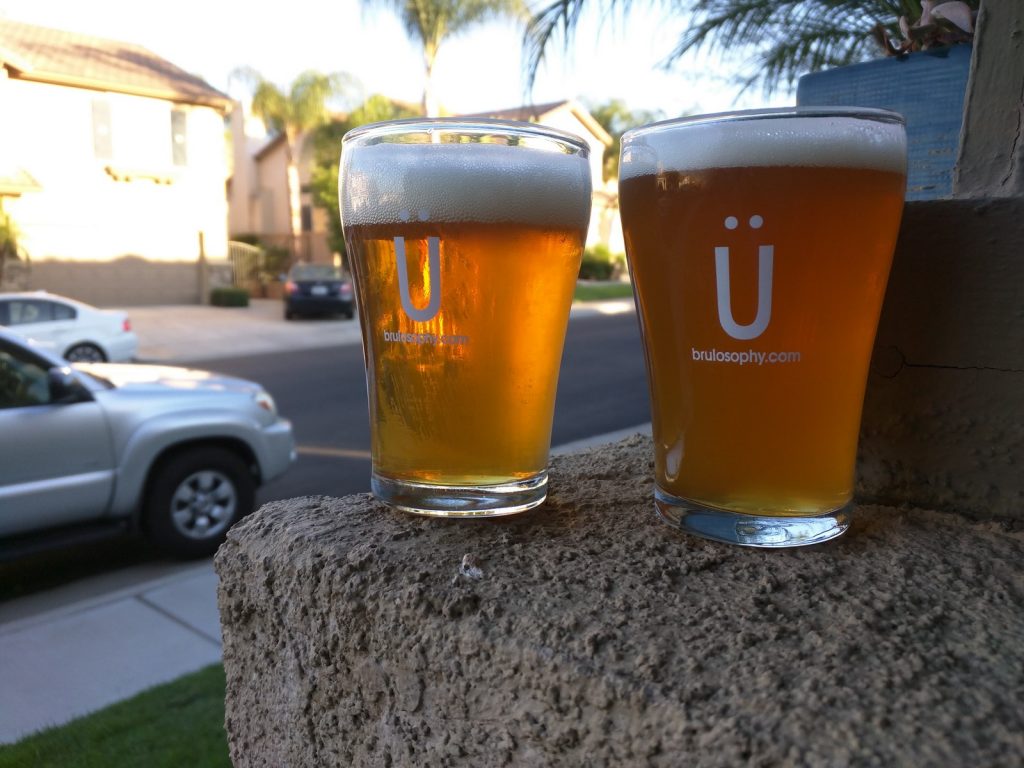
| RESULTS |
A total of 15 people of varying experience level participated in this xBmt, all blind to the variable under investigation. Each taster was served 1 sample of the force carbonated beer and 2 samples of the keg conditioned beer in different colored opaque cups then asked to select the unique sample. In order to reach statistical significance with this number of participants, 9 (p<0.05) would have had to accurately identify the odd-beer-out, while only 6 (p=0.38) were able to do so, suggesting tasters were unable to reliably distinguish a force carbonated IPA from a naturally carbonated version of the same beer.
My Impressions: Other than failing one “blind” triangle test after a night of drinking, I was able to select the unique sample in every other attempt. I know it goes against the results, and this could certainly be bias speaking, but I thought the naturally carbonated beer was quite a bit different than the force carbonated sample, and not in a good way. It had what I can only describe as a sweet bitterness that I often notice in presumably old or poorly stored commercial IPA. It wasn’t actually sweet, more of a sticky sort of caramel with a harsh bitter component, while the force carbonated version tasted like MACC IPA.
| DISCUSSION |
There aren’t many xBmts I’ve approached with a strong expectation one way or the other, but I’ll admit, particularly given my personal experience with these beers, I fully expected tasters would easily be able to tell the keg conditioned beer apart from the force carbonated beer. For the first time, I’m genuinely left wondering how the hell this happened, poking around for all the potential reasons people couldn’t reliably distinguish these beers that I perceived as being so different. And it’s not like the number of tasters who were correct on the triangle test was all that close to the significance threshold, not even half got it right. The fact these results might be used by some as evidence to confirm that natural carbonation produces a beer no different than force carbonation concerns me a bit. It’s true I have a strong preference for force carbonation that’s potentially biasing my perspective, and as hard as it is for me to accept these beers weren’t qualitatively different, the evidence seems to suggest they were more similar than I perceived. It’s in times like these I’m reminded of the importance of replication.
As someone who appreciates clarity as well as being able to drink my beer as soon after packaging as possible, especially IPA and other hoppy styles, I’ll certainly be sticking with force carbonating. The good thing is both methods work! Whether through natural or forced methods, beer can be made bubbly, and ultimately each brewer is left to use whatever works best for them.
If you’ve ever naturally carbonated beer in a keg or have other carbonation experiences, please share your thoughts in the comments section below!
Support Brülosophy In Style!
All designs are available in various colors and sizes on Amazon!
Follow Brülosophy on:
FACEBOOK | TWITTER | INSTAGRAM
If you enjoy this stuff and feel compelled to support Brulosophy.com, please check out the Support Us page for details on how you can very easily do so. Thanks!

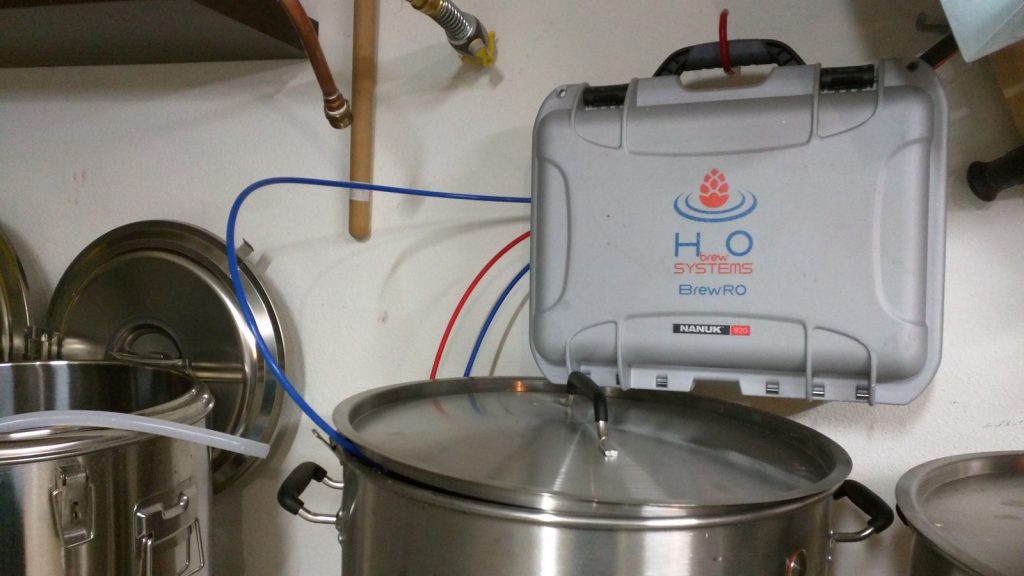
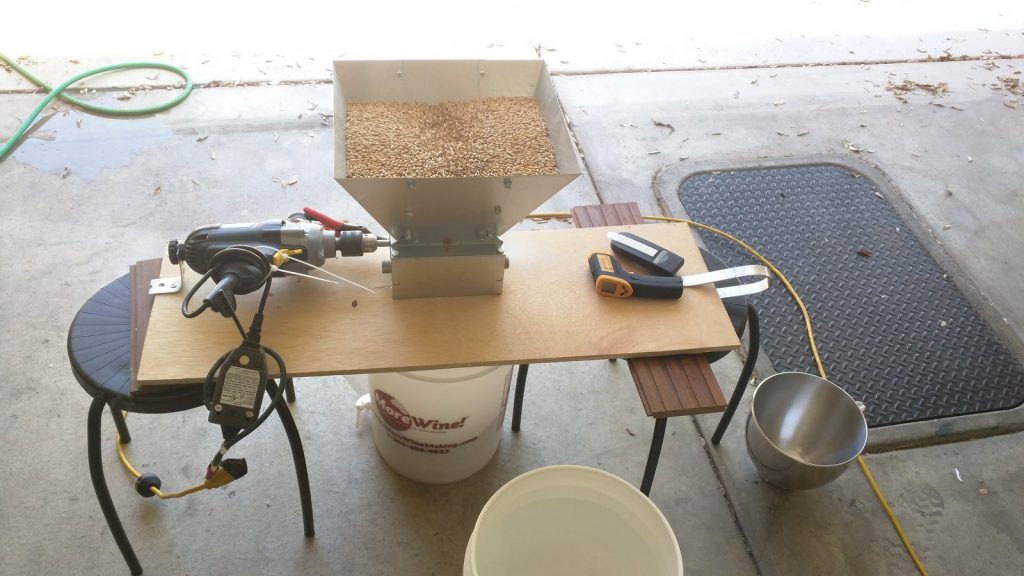
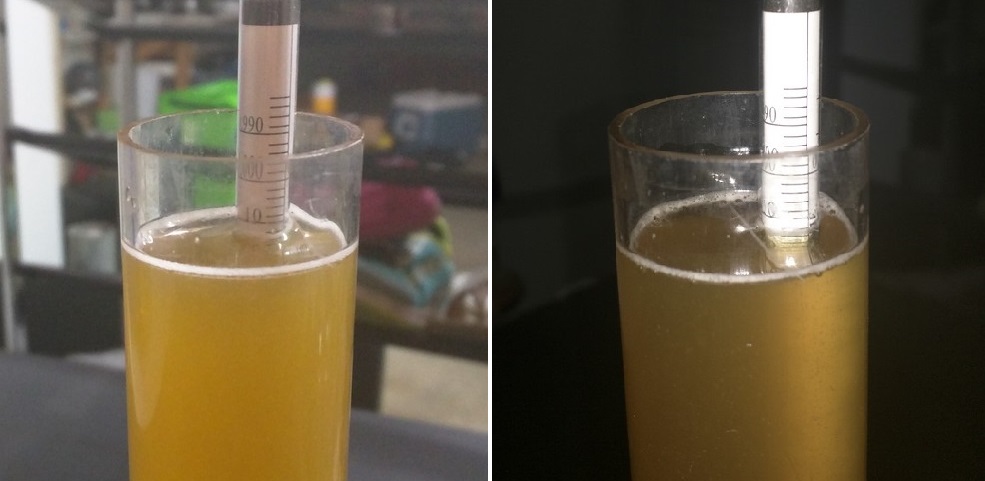
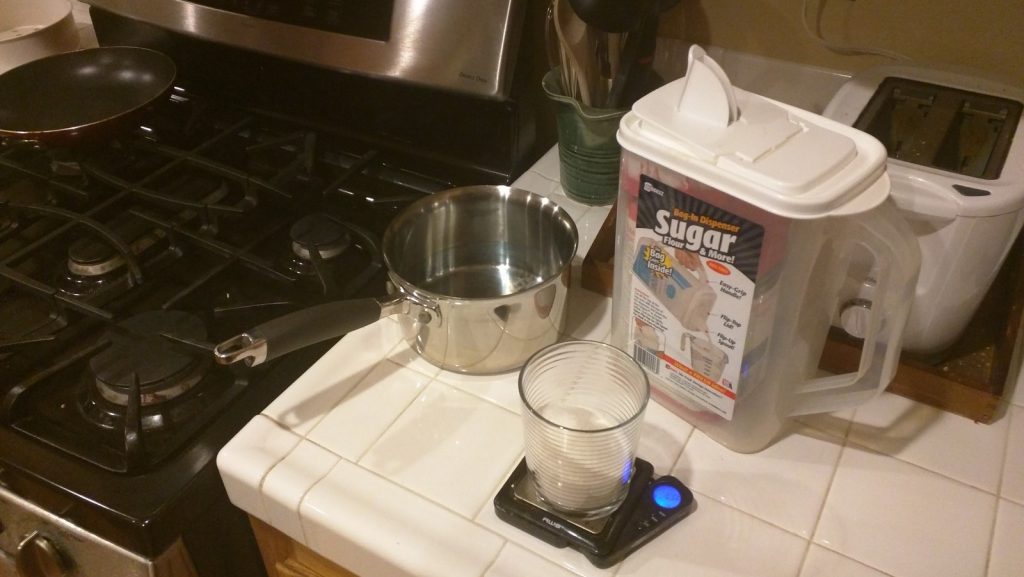
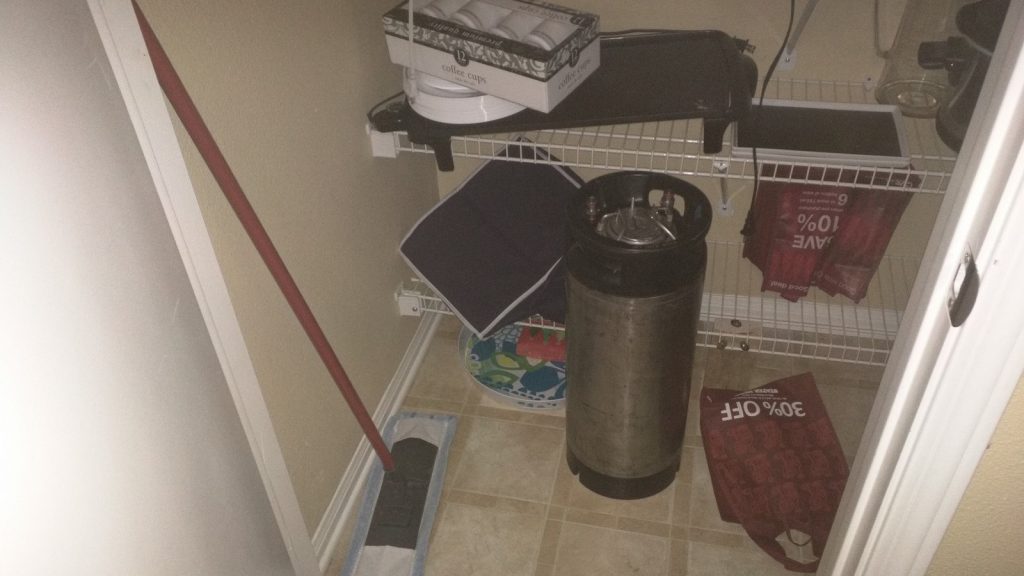










40 thoughts on “exBEERiment | Carbonation Methods: Force Carbonation vs. Keg Conditioning In An American IPA”
Interesting. Like many, I always bottle-condition 10-12 bottles for portability and gifts, and keg the rest with CO2, and I’ve never reallty noticed a difference, though it’s a while since I did a side-by-side tasting. My kegs are not chilled (no room for a keezer etc in my small flat), so they are kept at room temp same as the bottles.
On the other hand, after winning a competition (in the UK), I had the golden opportunity to test the difference between the same batch of a hoppy APA brewed on a 100L kit by a commercial brewery. It was split between force-carbed keg and traditional real-ale cask conditioning, and served to the public side by side in a pub. I, and nearly all my beer-loving and homebrew club friends, preferred the cask version. The lower carbonation and warmer temperature made it hard to compare cleanly, but the overall pint seemed to have more flavour. Those who preferred colder and fizzier beer preferred the keg version. It’s hard to say whether these differences would have disappeared if a sample of the cask version had been topped up with CO2 and chilled, but I suspect they would have been pretty similar.
Great, as usual! No recipe for us this time, though?
MACC IPA is already in the recipes section here.
https://brulosophy.com/recipes/macc-ipa-by-ray-found/
https://brulosophy.com/recipes/macc-ipa-by-ray-found/ because its a recipe already on the site.
When I naturally carbonate in the keg, I fine with gelatin in my secondary before kegging. You still get a crystal clear beer, but I also get the slightly caramel sweetness.
When I started kegging, I did the natural carbonation method (I guess hoping to conserve CO2) for 1 batch before I gave up on it and switched to force carbonating. I ended up over-carbonated and with extra yeast in the bottom of the keg, making the decision very easy for me.
Side note: THANK YOU for doing an Exbeeriment without the use of gelatin. I have no problem with using the stuff, but I am trying to figure out the best way to brew clear beer without the use of gelatin (since I have a few friends who are against it). I totally get that it is your beer and your preferred method, and in the end only a small fraction of the beer in these batches actually gets used for the triangle tests, so it does make sense to do it with whichever method ultimately makes you happy. I have just wondered on a few of these recent Exbeeriments if you would have seen a difference in clarity based on the variable being tested if you hadn’t used gelatin (i.e. sparge water temp, boil pH, grain crush (used Biofine)). Just a thought. I plan on testing a few of these variables myself (particularly pH levels throughout the process) to see if they help the beer naturally clear up faster.
Honestly, these recent results are starting to make me wonder. Don’t get me wrong, this is the best homebrew website in the entire world, but something that recently occurred to me is this: we use triangle tests to make people unsure about which beer is the “odd one out” and then we ask them which one it is, often in social situations. But it could be that, psychologically speaking, something happens to people’s palates when they know they’re being tested in this way, especially with others around. For example, they get anxious about being wrong and this changes their experience. Marshall’s a psychologist, he knows that people are very situationally sensitive, even visual perception goes haywire in certain charged social situations. Social anxiety can make people see two lines as equally long when they are objectively different lengths, for example.
I mean, I dunno what’s going on. When the tester can easily distinguish the beers while only 6/15 testers can? And when this occurs over multiple xbeeriments? Something is distorting the panel’s impressions, right?
I think there’s a couple factors in this case… 1. The beers are more similar than I expected. 2. The flavor of the naturally carbonated beer is a particular character, that while I hesitate to use the term sensitivity, I do have a particular aversion to. 3. Bias: I knew which was which. I knew which was the one i “prefer” before even starting. 4. I get multiple tries.
Yeah, I’m starting to wonder if most people can only identify certain traits/flavors, and which those flavors are differs among most people. That could explain scenarios like this where I take away that clearly there is a difference, but most people can’t tell the difference so it can’t be proven with a random sampling.
I’ve read the argument that testees (not testies!) shouldn’t be pre-screened to make sure they can notice the variable being tested because the whole idea is to get a random sample representative of the general population. That is the case with scientific analysis usually, but I can argue otherwise.
If you want to make the best beer possible then you should pre-select a group that is known to notice differences in the variable being tested. Then you’ll know you’re testing the variable and not the taste testers. Even if some people might not be able to tell the difference we don’t care.
We aren’t trying to get to a point where 51% can’t tell if it is good beer or not, we want to get to where 98% think it is good beer. Make every variable better so people who notice it get what they want. The people who can’t notice the variable won’t mind either way, so cater to the sensitive palates in every way possible.
I’m a professional statistician/research scientist who designs, runs, and analyzes statistical experiments for a living…I’m also a homebrewer who thinks Brulosophy is the best beer blog around!
Brulosophy’s sample sizes are simply too small to draw meaningful/generalizable results from. I think of the XBeeriments as “anecdotal” findings – not the final statement on the matter. (From a statistical perspective, it’s a matter of statistical power, confidence, and precision – specifically, the XBeeriments have too small of sample sizes (and thus statistical power) to be confident in the results, and thus the results are not precise either). Personally, I’m almost more interested in the ‘impressions’ section than the p values (again with a n (n=sample size) of 20, I take p values with a grain of salt). A more rigorous approach would be large sample sizes (minimum of 70), running meta-analyses on multiple re-runs of the XBeeriment, and also lab testing on the hard science stuff. Until the CDC starts funding Brulosophy, I’ll take what we can get!
Keep up the awesome work guys!
I agree with Nick – and especially jfolks response. I understand that it may be difficult to get a large panel, but I would love to see sample size to go up to 50+ – I think you will see much less variability than in smaller sample sizes.
I still think (as I posted on DMS experiment) that repeated testing of people who picked the right glass on the first try – is very informative. Ray could tell the beers, and Marshall could tell DMS beer, with nearly 100% performance. Is it because they were involved in the process and knew the variable and knew what to look for? Are they “super-tasters”?
Well, lets see if other folks can do it reliably, or if they just “randomly” guessed.
To me the fact that Ray could tell the odd beer essentially every time is extremely significant. It means there is a difference in taste and at least *some* people can sense it with ease.
Next question is – how many of those people are out there and just how good they are at reliably picking the flavor?
I think currently, by focusing solely on the p-values, we only get a small slice of the real effect. By doing repeated testing, and using larger size groups of testers, it will be a lot easier to zero in on whether effect is just insignificant, or if some sizable fraction of tasters can pick it up easily and the rest of people either can’t taste it, or are thrown off by some other random effect.
If you can, try to not to finish off these kegs immediately and try them again in a month or 2. Most likely, the keg conditioned batch will have near zero DO while the co2 carbonated keg will have a significant amount – it is extremely difficult / near impossible to keep DO levels below industry targets (200 ppb) as a homebrewer, even taking extreme measures. The damaging effects of oxidation are not immediately apparent. If your kegs don’t normally last this long it is not really a concern of course :).
An idea for a xbmt I would love to see – apparently it does not take much yeast activity (or time) for the yeast to scavenge o2 in the keg. As little as 20g dextrose should be twice as much as you need and all o2 scavenging should be complete within a few hours (at room temp). A split batch of a hoppy beer with this amount of dextrose added to one of the kegs left at room temp for a few days, then both cooled and carbed and aged for a couple of months. I guarantee you that will reach statistical significance. You would prove that your best closed racking technique into purged kegs still introduces a damaging amount of o2 and that the 2-3 day dextrose condition eliminates it.
I too would love to see this experiment, but then the beer transfer to the keg should be done a bit more controlled – I would love to see a closed transfer (no cold-crashing in fermentor – either cold-crash in the keg under CO2 or cold-crash in fermentor under CO2), and transfer into a keg that was purged by filling it with say starsan to the top and emptied with CO2.
After transfer, maybe purge the headspace a few times.
And a third option could be a bottle that is filled from a keg (or fermentor) – does its flavor deteriorate much faster because of oxygen introduced during bottling?
Joost,
Taking what you´ve mentioned, if I want to DH in a keg after primary, would you think it would be a good idea to put the hops with a little of dextrose? As little as it would eliminate the DO by a tiny fermentation activity and not screw the oils extraction?
Perhaps this could be tested by doing some tests with beers that are obviously different to everyone outside of the actual test.
Just curious, why did you choose to use table sugar instead of the more common (for conditioning) corn sugar?
Interesting that the force carbed beer was so much clearer.
I’m curious about the sweetness you found in the conditioned beer. I’m wondering if that’s a product of the priming sugar, and if it would still be there had the beer been conditioned with krausen or DME instead of sugar.
I always use table sugar (sucrose). It ferments out completely and doesn’t make beer sweeter unless you sample too soon. Sometimes I’ve found carbonation isn’t ideal until close to a month after bottling.
The force carbed beer spent a longer time in cold temperatures.
Again, this should be repeated but the kegs aged.
Great experiment, I usually force carb and have thought about trying Keg conditioning.
I wonder If there was more oxygen in the Keg than the yeast could utilize, resulting in “Stale” taste?
When I have done similar tests with bottle conditioned vs Keg Carbonated I had purged the bottles as best I could then capped on foam. I wonder if minimizing the O2 would make enough of a difference. you could fill the keg with starsan and pushed it out with CO2, then quickly added the sugar solution (still some O2 would get in but not as much).
I have played around with this method (and will some more). But have settled on a hybrid method. I Keg the beer when yeast is still fairly present (about two days after reaching terminal gravity). Then let the keg sit in a warm area for two more days so (in theory) the yeast can still scavenge any O2. Then I chill and force carb. This has helped eliminate some sweetness I was associating to oxidation… But have not blind tested it on others…
The forced carb keg had a two week head start sitting at cooler temperatures in the keezer. Whereas the naturally carbed keg was sitting at ~75 F ambient. While each batch was cold crashed beforehand, I’d venture a guess that the additional two “cold” weeks might be a contributing factor to the differences in appearance.
Also, being that the batches were NOT fined, I suppose that means that there’s more “opportunity” for clarifying during the extended cold storage (relatively speaking). If the logic follows, this, too, could have some effect on taste.
Also, beyond the cold storage, I’m curious as to whether the immediate and continual CO2 pressure from the forced carbing helps in the clarifying process in comparison to the slower, gradual pressure from the natural carbonation. I couldn’t begin to articulate why. But the forced carb keg sitting under a higher, sustained pressure for a longer amount of time is another variable to consider when evaluating the results.
Just my two cents. Thanks, as always! Keep ’em coming!
Thanks Ray- How long do you let the keg sit under 40lbs of pressure?
I usually do 30lbs for 36 hours and then back it down to 10/12lbs.
24 hours at 40. Serve at 11-13
Hi Ray, with just 24 hs at 40psi, is the beer well carbonated?
Im from Argentina, and cant afford a BBT yet to my small brewery, and im looking for a method to carbonate 6 kegs.. Thanks a Lot!
In my experience, 24 hrs at 40 psi produces a nicely carbonated beer, though I still give them another day or 2 at 14 psi to balance out.
Thanks man!I forgot to mention that i use 0.5 bbl kegs. So maybe i need more time? Have u tried them? 40psi in 24 hs at 40F will be enough?
I recently made a Belgian triple (La Fin du Monde clone attempt) that I naturally conditioned in a keg with corn sugar. FYI…Beersmith app has a calulator that tells you’ve much sugar to use when naturally carbing in a keg…seems about half. I didn’t do a side by side comparison, but the carbonation is great. I was concerned that getting 4.5 volumes of carb using the force carb method would leave the beer with a metallic taste, which I’ve gotten before when I slightly over carbed an English mild (I didn’t realize you have to carb sessionable beers with a lower CO2 volume). I think you may get a different result if you did this experiment with something that has a higher level of CO2 volume. Anyway, love this, and all, of your work…keep it up!
Paul Klammer As a committed bottle conditioner I’ve wondered about keg conditioning. I have found no one who can respond to my questions about it so this article was welcome. I thought the reverse expectation of the author’s would be true (keg conditioning would be better than force carb after sufficient time). I wonder if a repeated tastings at 6 weeks and 6 months might show a different result. Of course and IPA would not be the preferred example in that case …
Interesting, lack of results. In the UK it’s quite a debate with CAMRA preferring all forms of natural carbonation (bottle conditioning, casks, etc.). That said, cask beer is most often fined, rolled, and let settle for a few days before serving.
This result reminds me of the recent DMS exbeeriment – author can taste the difference but the tasting panel finds nothing. Either both brulosophy authors are supertasters or tasting panels have limited sensitivity. Occam’s razor suggests the latter.
Or knowledge/bias is real.
That wouldn’t explain how the authors in the two tests could pick out the different beer in blind triangles, but it could explain the preference for force carbed over naturally conditioned. Preference for natural conditioning be CAMRA in UK and Reinheitsgebot in Germany could also be nothing more than bias.
I actually really enjoy both methods. I haven’t had the opportunity to try keg conditioning, but I frequently bottle condition my saisons/belgians/brett beers. Mostly because I actually really like seeing how they change over time, and also because it’s my little pet project, and it makes it easier to share and take with me places. Also many of the commercial examples of said beers are bottle conditioned. I have a hard time believing it is ONLY tradition that drives this practice.
Force Carbonation is great for both faster turn around, and in instances where there is likely marginal gain. This applies obviously to Lagers, hop-driven apa/ipa, etc. It’s quite a few extra steps for something that I doesn’t appear to actually do anything for those styles.
Love the blog guys, keep it up.
Cheers.
Hi! I am so glad you did this test. Despite your group not being able to tell the two beers apart, your descriptions of the difference in flavor between yeast conditioned vs. force carbonated IPAs exactly matches my (until now very persistent and frustrating) experiences.
I’ve been home brewing for 3 years, and have been attempting to ‘hit the mark’ of a commercial IPA for that amount of time. I am extremely sensitive to the shortcomings of my home brew, while most of my casual ‘beer drinker’ friends are not, especially the ones that are not necessarily IPA fanatics. When bottle conditioning, i’ve much better success with English and Belgian beers, ESBs, stouts, etc. Beers that have English yeast character, Belgian yeast character, etc.
In the past year, I zero’ed in on kegging vs. bottle conditioning as the major culprit, specifically the flavor contributions of the yeast activity in the bottle (which are undeniable, and it is a known phenomenon that yeast flavor compounds contribute a tiny, tiny fraction of the total volume of a finished beer (less than 1%) yet contribute an out-sized influence on overall flavor). I too am shocked at how seemingly none of my friends have corroborated this (in my opinion, huge) flavor difference. Flavor was the SINGLE driving factor for me sticking with kegging, and abandoning bottle conditioning. The ease of kegging vs. bottle conditioning was just an added benefit, but was not the reason I transitioned to kegging. The elapsed time before you can drink your finished beer is also not the reason I switched, nor has it become shorter. I usually have to wait about 2 weeks before the ‘carbonic bite subsides’, and the beer tastes like a ‘commercial IPA.’ 2-3 weeks was about as long as it took to be drinkable when bottle conditioning too.
Recently, I’ve identified two commercial hoppy beers that ‘suffer’ from the flavor contributions of yeast activity in the bottle, and subsequently taste a lot like the bottle conditioned IPAs and APAs I had been producing for years before kegging (and had always been slightly disappointed with).
Sweetwater IPA
Sweetwater 420 pale ale
Birdhouse Pale Ale (the brewers art)
The first two are bottle conditioned, and the third uses Belgian yeast.
My experience for years before kegging has been this:
– I taste a gravity sample once terminal gravity is reached, and it tastes amazing. It tastes like a commercial IPA (but flat). Slightly bready but clean backbone, clean hop bitterness. No ‘belgian’ flavors. I really don’t think all i’m tasting here is ‘hop character that hasn’t faded yet’ because i’m really hypersensitive to yeast flavor in general. So, I reject the opinion that all i’m tasting at this premature state is SUPER FRESH IPA character.. its also a clean expression of yeast flavors, or lack thereof.
– I then bottle condition, following generally regarded best practices, and find that no matter how long I cold condition after proper carbonation levels are reached, the flavor has changed irreparably. The quality of the bitterness is now harsh and sweet, and slightly belgian flavors lurk in the background, muddling the ‘clean bread/grain’ yeast character that was there before bottling. Despite standard assumptions, my hop aroma usually remains relatively unaffected if the beer was heavily dry hopped, but its hard to appreciate the beer when comparing it to commercial examples of a similar IPA because of the yeast flavor issue.
Now that I’m kegging, I can count on the final beer tasting almost EXACTLY the way it tasted at my last gravity sample.. the only thing I have to be careful about, when kegging, is not purging the headspace too many times once i’ve started force carbonating (which means setting your pressure low, taking your time and not overshooting the carbonation), aside from the first couple O2-related purges when raking to the keg, purging the headspace when all thats in there is C02 can totally blow off all the precious hop aroma from dry hopping.
I realize that this is an older post but I found it interesting. Am I alone in feeling that, while both are good, naturally conditioned beers have smaller CO2 bubbles. Maybe it’s in my head because I’ve never had a chance to test my ability to identify like in an experiment like this.
I’d love the chance though, I swear I can tell the mouthfeel difference between force carbonation and the natural.
I’d be curious to see the results of extended aging on a Belgian dubbel, imperial stout, or barleywine of force carb vs. bottle conditioning.
I bottle conditioned my beer exclusively for 10 years and then switched to kegging.
My experiences has shown that almost all my beers are better when kegged due to lower O2 pickup and lower sediment levels.
I’ve found that you also can achieve the finer bubbles via kegging that you do via bottle conditioning if you wait long enough.
certain belgian ales (and other beers that are aged for an extended period) are really the only style I’ve noticed that I significantly prefer bottle conditioned. There are these magical formations (that look like little colonies) that rise to the head of the beer that cannot be achieved via force carbing. However, this doesn’t enhance all styles.
For an IPA where O2 pickup and sediment are detrimental to the beer I’d go with force carbing all the way.
I know I am late to the party with my comment, but here we go:
For me the flavors you describe from the naturally conditioned keg (i.e., this somehow rough bittersweet, caramel-like note) point to a slight oxidation issue. That would be supported by the seemingly darker hue that beer shows in the picture you posted. To me that does not look only murkier, but also a tad darker.
One of the above comments (by Peyton) goes in the same direction. Could it be that a higher amount of O2 remained trapped in the headspace of the naturally carbed keg, as compared to the force carbed one?
Did you perform a closed transfer with the force carbed keg? Did you purge the headspace a few times after transferring?
I do not keg, but in my own small bottle conditioning experiments I found that the air remaining in the bottle headspace has a noticeable impact on hoppy beers, especially on color but also, to a lesser extent, on flavor and aroma. This is nothing new really, but for me it further proved that the yeast is certainly not able to scavenge the complete O2 from the headspace, as some people still suggest.
Did you apply a yeast/sugar ratio?
I red it twice but there is no mention of how much yeast you used along with the sugar to keg condition it.
Thanks!
Sounds to me like the keg conditioned beer was oxidized when filling the keg and adding priming sugar. More care needs to be taken to avoid oxygen when adding the priming sugar.
My current practice is to use a 500ml syringe and inject the priming sugar to a fully purged keg via the gas post. I ensure no air bubbles are in the syringe and line prior to injecting the keg. Once the priming sugar solution is added, I then do a closed transfer from the fermenter further mitigating oxygen pick up.
It then generally takes anywhere from 3 to 5 days for the keg to carbonate at room temperature. From there it goes in the keezer. The shelf life of my beers since I started keg conditioning with this practice has been significantly extended.
I always appreciate the experiments on here, but this one wasn’t executed with best practice